
Head Banging Autism
Understanding and Managing Head Banging in Autism Spectrum Disorder
An In-Depth Exploration of Head Banging in Autism
Head banging is a prevalent behavior among children with autism spectrum disorder (ASD), often causing concern for parents and caregivers. While it can be a normal developmental phase in young children, persistent or severe head banging may signal underlying needs or health issues requiring intervention. This article delves into the nature of head banging in autism, examining causes, the neurobiological underpinnings, safety considerations, and effective management strategies aimed at improving outcomes and ensuring safety.
Is Head Banging a Sign of Autism?
'Head banging' involves repeatedly hitting the head against a solid surface like a wall, floor, or the side of a crib. This behavior is often seen in young children, especially those with autism spectrum disorder (ASD). In autistic children, head banging can serve multiple functions, including self-soothing, communication, or sensory regulation.
Research shows that around 30% of children on the autism spectrum engage in self-injurious behaviors such as head banging. It may originate from sensory processing issues—either seeking additional sensory input when under-stimulated or decreasing overstimulation when hypersensitive. Head banging can also be a response to frustration, anxiety, or physical discomfort, like ear infections or headaches.
While head banging is common within the autism community, it is not exclusive to children with autism. Some typically developing children may also engage in brief head banging phases, often related to sleep or routine changes. However, persistent or intense head banging beyond age three should be evaluated by a healthcare professional.
Understanding whether head banging is a sign of autism involves considering its context within the child’s overall behavior and developmental profile. For example, children with autism may also show symptoms such as lack of pointing, limited eye contact, and absence of response to name alongside head banging. Recognizing the behavior as part of a broader pattern helps in determining appropriate interventions.
Importantly, head banging in autistic individuals might be associated with underlying neurological or emotional factors, such as difficulty in communication or managing sensory input. It can sometimes lead to injuries like bruises or cuts, emphasizing the need for safety measures and behavioral strategies.
In summary, head banging can be an indicator of autism, especially when it functions as a means of coping or communication amidst sensory or emotional challenges. However, it can also occur in non-autistic children, highlighting the importance of comprehensive assessment to determine its cause and proper management.'}
Age and Normalcy of Head Banging Behaviors
When does head banging typically start in children?
Head banging is a common behavior that usually begins around 6 months of age. During this early stage, infants may bang their heads as a part of rhythmic habits that help them self-soothe or stimulate their sensory systems. This behavior is often seen during sleep times and tends to occur in a predictable pattern.
What are the normal developmental phases for head banging?
Most children engage in head banging as a part of their developmental exploration. It can be a way to regulate sensory input, express frustration, or seek comfort. The behavior usually peaks during toddlerhood and often diminishes naturally as language skills and adaptive behaviors develop. Typical head banging usually stops by age 3, as children learn alternative ways to communicate and cope with emotions.
When should I seek medical advice about head banging?
Head banging in toddlers is generally harmless when it occurs occasionally and as part of normal development. However, parents should watch for signs that indicate a need for medical or behavioral evaluation. These signs include frequent or intense head banging that causes injuries such as bruises or cuts, disruption of sleep, or if the behavior persists beyond age 3.
In children with additional concerns such as developmental delays or autism spectrum disorder, head banging may be more frequent and complex. In these cases, consulting with a pediatrician or a specialist like a behavioral therapist is recommended to assess underlying causes and develop appropriate intervention strategies.
When is head banging a cause for concern?
Research shows that head banging that starts around or after age 3 warrants medical attention. Persistent head banging beyond this age can suggest underlying issues like sensory processing problems, emotional distress, or physical discomfort. It is also important to seek advice if head banging results in injury or significant disruption to daily life.
In summary, while head banging is often part of typical childhood development, ongoing or severe behaviors should prompt a professional evaluation to ensure safety and address any underlying needs or challenges. Proper guidance can help caregivers support their child’s development and ensure their well-being.
Causes and Triggers of Head Banging in Autism
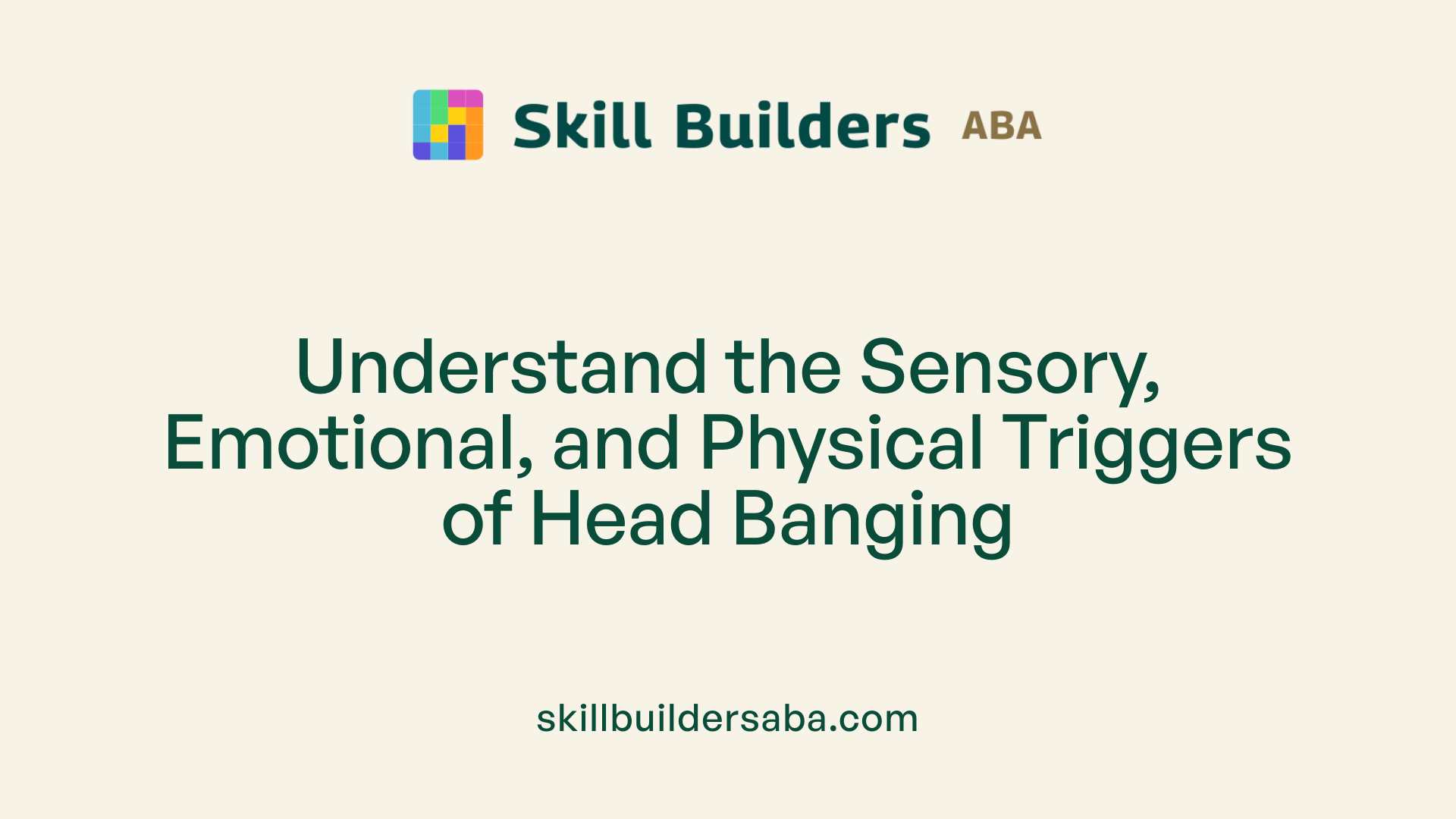
What causes head banging in autistic children?
Head banging is a common self-injurious behavior among children with autism. Its causes are diverse, often linked to the child's sensory, emotional, and physical state.
One primary factor is sensory processing issues. Children with autism may experience sensory overload, where too much stimulation leads them to engage in head banging as a way to self-regulate or decrease their sensory input. Conversely, some children may be under-stimulated, prompting head banging to stimulate their vestibular system and achieve sensory balance.
Communication challenges also play a significant role. Many children with autism have difficulty expressing their needs or feelings verbally, so they use head banging as an alternative method of communication — signaling discomfort, frustration, or a desire for attention.
Physical discomfort or pain is another common trigger. Conditions like ear infections, headaches, gastrointestinal discomfort, or other health issues can lead children to bang their heads in an effort to seek relief or indicate that something is wrong.
Environmental factors, such as routine changes, overstimulation from noisy or busy settings, or emotional distress like anxiety or frustration, can intensify head-banging behavior. These triggers may cause a child to seek a calming or distracting activity when overwhelmed.
Understanding these causes requires careful observation and assessment. Behavior tracking tools like ABC (antecedent-behavior-consequence) data collection can help caregivers identify specific triggers.
Interventions aim to address these underlying causes by creating sensory-friendly environments, teaching alternative communication methods, and managing emotional stressors, ultimately reducing the frequency and intensity of head banging in children with autism.
More about causes
A comprehensive search using terms like "causes of head banging in autism" reveals that these behaviors are deeply rooted in neurobiological factors, including sensory processing differences, pain perception variations, and emotional regulation challenges. Medical evaluations can rule out physical ailments, while behavioral therapies focus on teaching adaptive coping strategies.
Management Strategies and Therapeutic Interventions
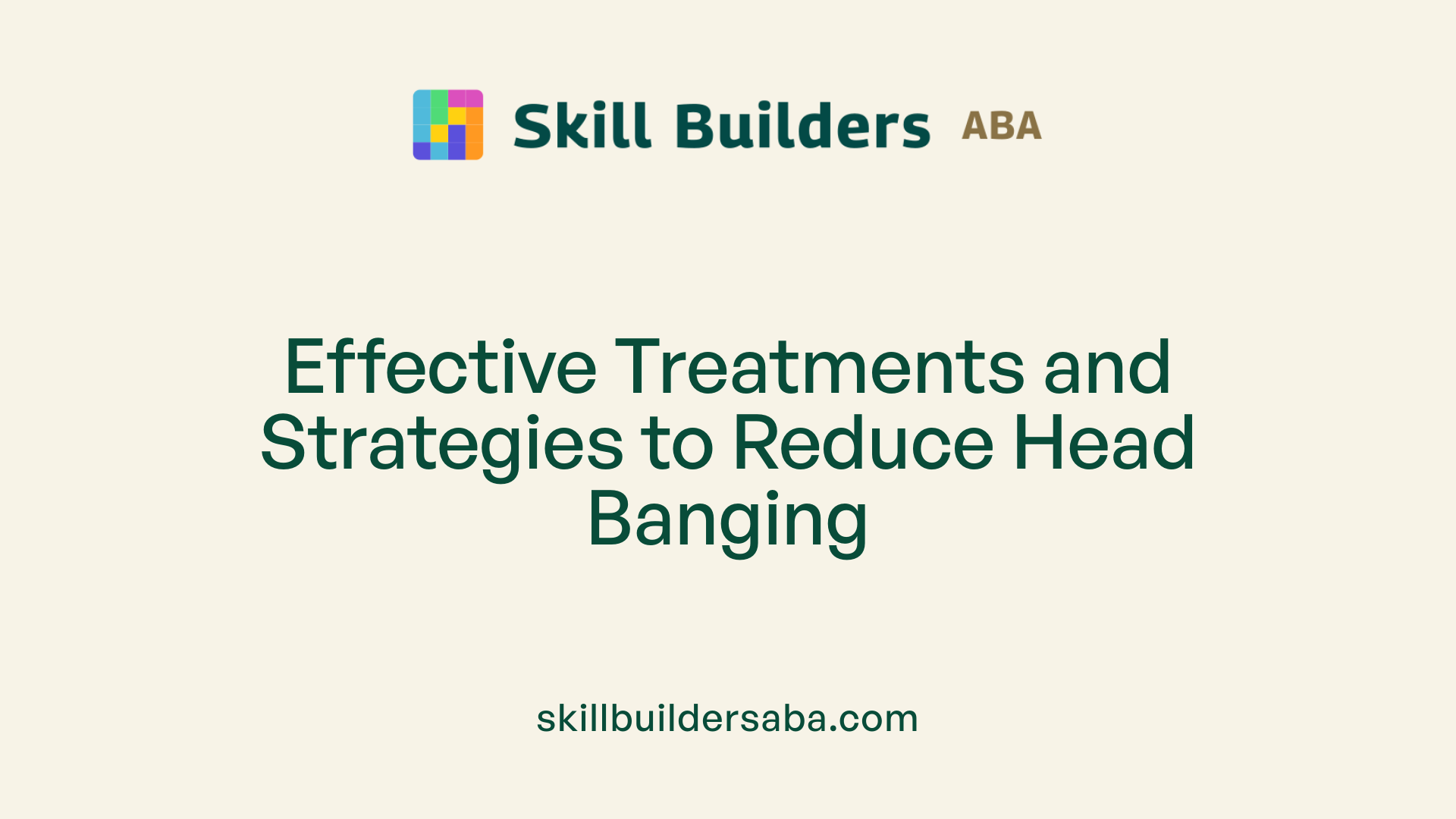
What are effective management strategies for head banging in autism?
Managing head banging in children with autism requires a multifaceted approach that addresses its underlying causes and functions. A crucial step is conducting a thorough functional behavioral assessment (FBA) to identify triggers such as pain, sensory overload or deficit, communication challenges, or emotional distress. Understanding these factors allows parents and professionals to develop personalized intervention plans.
Creating a safe environment is essential to prevent injuries. This can involve installing padding on walls or furniture, using protective helmets, and removing sharp or hazardous objects from the child's surroundings. These measures help mitigate the risk of bruises, fractures, or other serious injuries.
Teaching alternative behaviors is a core component of intervention. This involves training children to use communication methods like picture exchange systems or sign language to express needs, reducing frustration that may lead to head banging. Behavioral therapies, such as Applied Behavior Analysis (ABA) and habit reversal training, are effective in teaching positive replacement behaviors and improving self-regulation skills.
In addition to behavioral strategies, integrating sensory tools and aids can address sensory processing issues. Items like weighted blankets, vibrating pillows, sensory brushes, or textured toys can help satisfy sensory needs in a controlled manner, decreasing the likelihood of self-injurious behavior.
Addressing medical and psychological factors is equally important. Medical evaluation can identify pain sources such as ear infections or headaches, while psychological support can help manage anxiety, depression, or other emotional challenges contributing to head banging.
Engaging healthcare professionals, including psychologists, occupational therapists, and speech-language pathologists, provides a comprehensive approach. These experts can tailor interventions to each child's specific needs, combining behavioral, sensory, and medical strategies for optimal outcomes.
Studies support that a combination of tailored behavioral interventions, environmental modifications, sensory support, and medical management significantly reduces head banging and enhances safety and well-being for children with autism.
For more information, searching terms like "autism head banging management techniques" can provide additional resources and strategies tailored to individual needs.
Safety Devices and Precautionary Measures
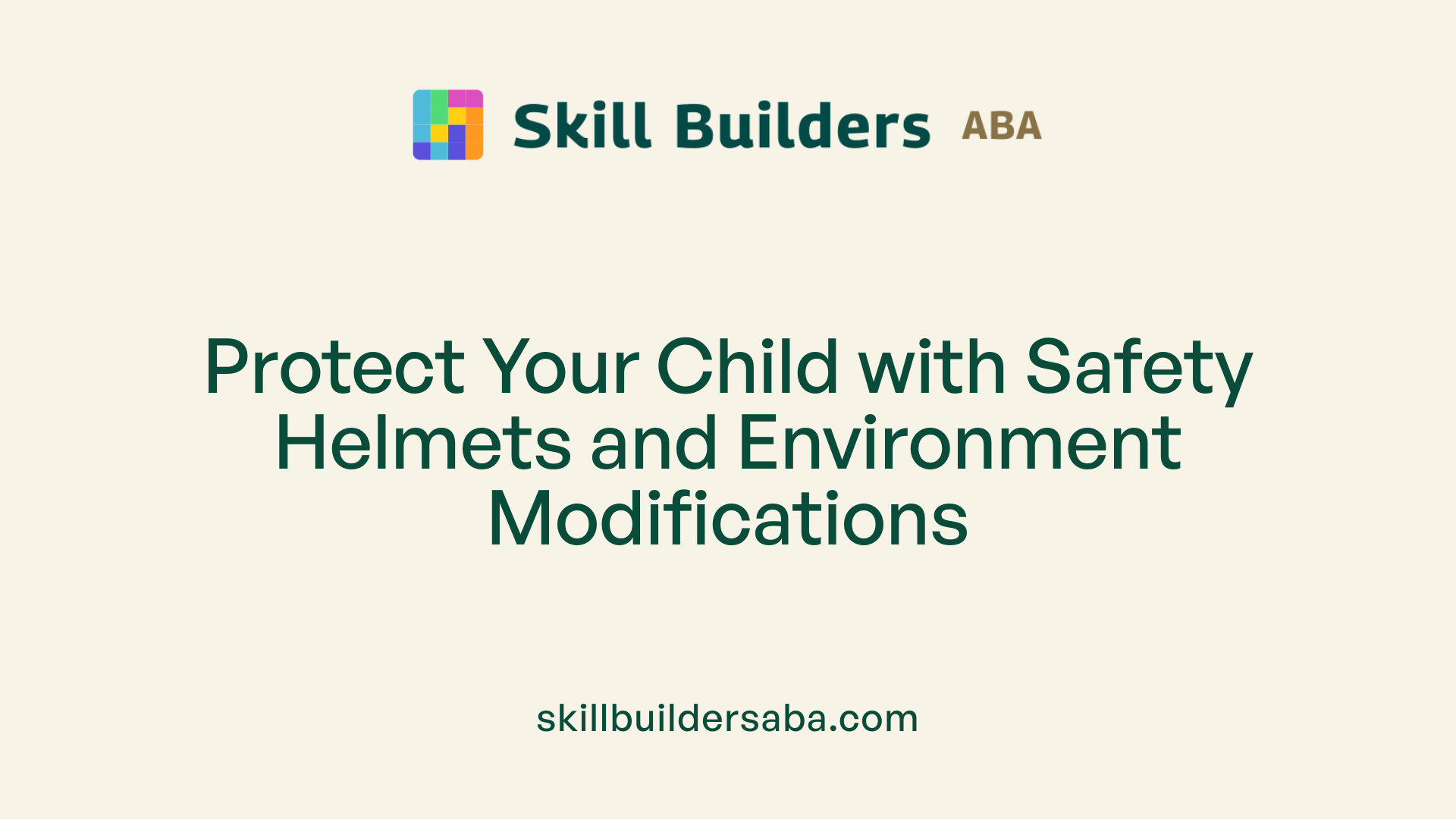
Are safety devices recommended for head banging, such as helmets?
Safety is a primary concern when managing head banging behaviors in children, especially those with autism or other developmental disorders. One common precaution is the use of protective helmets and headgear.
Specially designed helmets for head banging are lightweight and crafted to fit comfortably, while providing effective protection. Made from impact-resistant materials, these helmets help reduce the risk of head injuries like bruises, cuts, or more severe trauma such as skull fractures.
It is critical to work with healthcare professionals or specialists experienced in behavioral interventions to choose the right helmet. Proper fitting is essential to ensure comfort and safety, as ill-fitting helmets can be ineffective or cause additional discomfort.
Using helmets should be part of a broader safety strategy that includes creating a safe environment, teaching alternative behaviors, and addressing underlying causes of head banging. While helmets do provide physical protection, they do not replace behavioral therapies or other interventions aimed at reducing the behavior itself.
Parents and caregivers often search for additional information on this topic. A helpful search term to explore is: "safety helmets for head banging autism," which offers guidance on choosing appropriate protective gear.
In summary, helmets and headgear are recommended tools to prevent injuries during head banging episodes but should always be used alongside other behavioral and medical strategies to support the child's overall safety and well-being.
Differentiating Normal vs. Concerning Head Banging
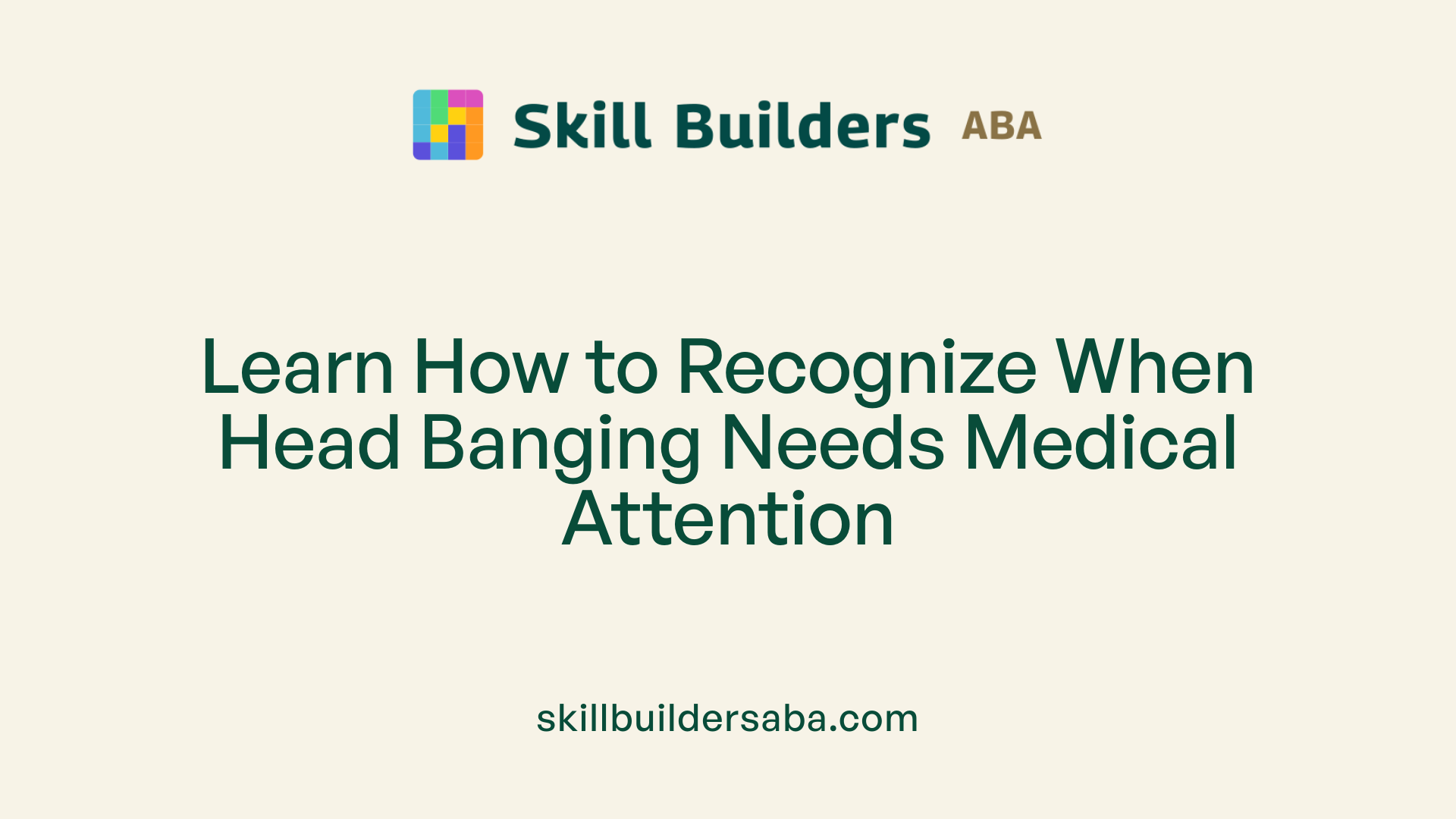
How can I differentiate normal versus concerning head banging in children with autism?
Understanding the difference between typical and concerning head banging behaviors in children with autism involves paying close attention to various aspects of the behavior.
Normal head banging usually occurs during specific times, such as when a child is tired, overwhelmed, or seeking comfort. It is often mild, limited in duration, and diminishes as the child grows older. Typically, it does not lead to injuries and might serve as a self-soothing activity.
Concerning head banging, on the other hand, tends to persist beyond the early childhood years, especially past age four. It often becomes more intense or forceful and may result in injuries like bruises, cuts, or swelling. This type of behavior can also be frequent, severe, or happen in contexts unrelated to sensory needs or emotional states.
In children with autism, head banging may be linked to sensory processing issues or communication challenges. However, if the behavior is ongoing, escalating, or causes harm, it is a sign that professional evaluation is needed. Persistent head banging may indicate underlying distress, unresolved medical issues, or development concerns.
Seeking advice from healthcare professionals, such as pediatricians, occupational therapists, or specialists in autism, can help determine the behavior’s cause. They can provide guidance on intervention strategies to prevent injury and address the underlying needs.
Ultimately, observing the behavior's severity, context, and impact on the child's health is essential in distinguishing normal childhood habits from concerning behaviors that require intervention.
Neurobiological Insights and Underlying Factors
What are the neurobiological insights into head banging and self-injurious behaviors?
Research into the brain's role in head banging and other self-injurious behaviors (SIB) reveals a complex interplay of neural, chemical, and immune systems.
In individuals with autism and related conditions, these behaviors are linked to abnormalities in specific brain regions involved in emotion regulation and sensory processing. For instance, hyperactivity in the limbic system, particularly the amygdala, suggests heightened emotional reactivity and stress responses that may trigger head banging.
Furthermore, the prefrontal cortex, which supports decision-making and impulse control, often shows altered functioning, making it harder for individuals to regulate behaviors like head banging.
On the neurochemical level, imbalances in neurotransmitters such as serotonin, dopamine, GABA, and glutamate are common. These chemicals influence mood, pain perception, and arousal, and their dysregulation can contribute to self-injury.
Genetic factors also play a role, with certain gene variations affecting brain development and neurochemical pathways that control sensory sensitivity and emotional regulation.
Further compounding this are neuroimmune interactions. Studies indicate that tissue damage from head banging can cause localized inflammation, leading to altered nerve function and possibly neuropathic pain. This pain may reinforce the behavior, creating a cycle of self-injury.
In addition, abnormal functioning in thalamocortical circuits, which process sensory information, can lead to either heightened sensitivity or under-responsiveness, both of which may motivate self-injurious acts as attempts to regulate sensory input.
Overall, head banging and SIB are driven by an intricate neurobiological framework involving hyper-responsive emotional centers, disrupted neurochemical balances, genetic influences, and immune system interactions, all of which contribute to the behaviors' persistence and characteristics.
Support and Resources for Caregivers
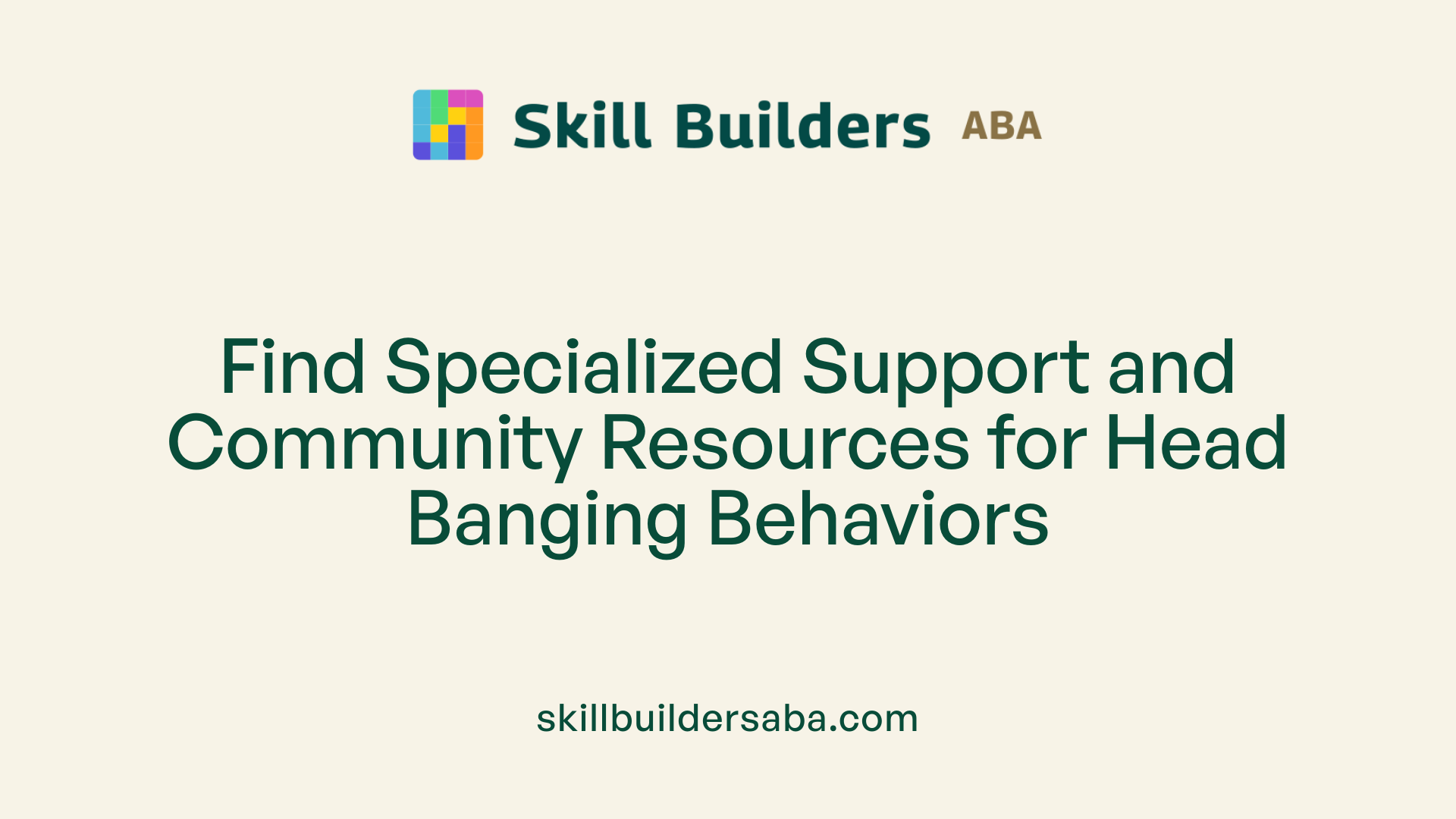 Caring for a child who exhibits head-banging behaviors can be challenging and emotionally taxing. Fortunately, several types of resources are available to help caregivers manage and understand these behaviors more effectively.
Caring for a child who exhibits head-banging behaviors can be challenging and emotionally taxing. Fortunately, several types of resources are available to help caregivers manage and understand these behaviors more effectively.
One of the most accessible support options includes specialized parent training programs. These programs focus on teaching caregivers how to identify triggers for head banging, implement behavioral strategies, and teach alternative, safer behaviors. Behavioral therapy services, such as Applied Behavior Analysis (ABA), are often recommended to assess the function of the behavior and develop tailored intervention plans.
Beyond direct therapeutic support, various advocacy groups and community organizations provide vital resources. Organizations like The Arc or regional groups like TN Disability Pathfinder offer support groups, respite care, and detailed guidance on navigating behavioral challenges. These groups also serve as platforms for caregivers to connect with others experiencing similar challenges, which can reduce feelings of isolation.
Healthcare professionals, including pediatric neurologists, behavioral specialists, and developmental pediatricians, play an important role. They evaluate underlying medical issues, such as pain from ear infections or headaches, and recommend appropriate interventions. Medical assessments ensure that any physical causes are managed to reduce the likelihood of head-banging as a response to discomfort.
Educational resources, both online and in community settings, are invaluable. Websites like the CDC Head's Up initiative and organizations such as the Brain Injury Association of America offer webinars, educational articles, and guides on behavior management and injury prevention. These resources help caregivers understand head-banging's potential functions—like sensory regulation or emotional expression—and how to respond effectively.
Additionally, community-based programs, faith-based support groups, and peer mentoring can provide emotional support. Counseling services may help caregivers deal with stress, anxiety, and burnout associated with managing persistent behaviors.
In summary, caregivers are not alone. Combining professional support, community resources, advocacy groups, and educational materials creates a comprehensive network to support caregivers' well-being and improve outcomes for children who head bang.
Navigating Challenges and Promoting Safety
Head banging is a common behavior among children with autism that can serve functional roles such as communication and sensory regulation. Recognizing the behaviors, understanding their triggers, and implementing tailored management strategies are essential steps in promoting safety and well-being. Multidisciplinary support, including behavioral therapies, medical evaluation, and sensory accommodations, can significantly reduce the risks associated with head banging. Educating caregivers about neurobiological aspects and providing accessible resources empower families to handle this complex behavior effectively. Through a combination of clinical interventions and supportive environments, children can develop safer ways to meet their sensory and emotional needs, leading to improved quality of life for both children and their families.
References
- Understanding Autism and Head Banging: A Deep Dive
- Autism, Head Banging and other Self Harming Behavior
- Self-injurious behaviour - a guide for all audiences
- Head banging: Why it happens and what to do about it?
- Causes and Interventions for Self-Injury in Autism
- How to Handle Head Banging in Autism: A Guide for Parents
- Autism Head Banging: Tips and Effective Solutions
- Head Banging in Autism: Causes, Effects, and Interventions
Reach Out Today
Learn more about how we can support your child’s growth and development. Contact us to discuss our services and availability in your area.
.svg)